This site contains affiliate links to products, and we may receive a commission for purchases made through these links.
Ready to enter the captivating realm of VR and discover how to experience Minecraft in this new format? With this advanced guide, you’ll be able to navigate the world of virtual reality and learn how to play Minecraft in VR with ease.
We’ll start by helping you understand the basics of virtual reality and its compatibility with Minecraft. Next, we’ll discuss setting up your VR headset for optimal gaming experience. After that, it’s time to install Minecraft for VR and get started on your adventure.
As you explore the blocky landscapes of Minecraft Java or Bedrock Editions in full 3D, be prepared for troubleshooting common issues that may arise. With our expert guidance, soon enough you’ll be mastering the art of playing Minecraft in VR like never before.
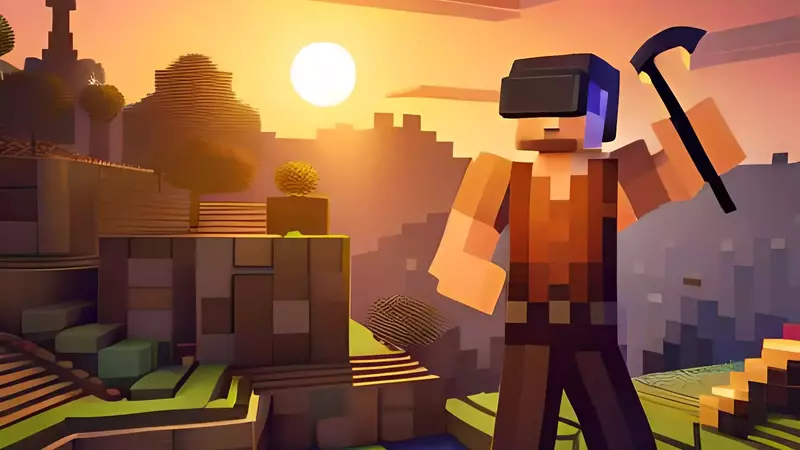
1. Understanding the Basics of Virtual Reality
Before diving into the immersive world of Minecraft in virtual reality (VR), it’s essential to understand the basics of VR technology and how it works.
This section will cover different types of VR headsets, their functionalities, and how they can be used for gaming experiences like Minecraft.
Key Takeaway!
To play Minecraft in VR, it’s important to understand the basics of VR technology and the different types of headsets available. Tethered headsets like HTC Vive Pro 2 offer high-quality graphics but limited mobility, while standalone devices like Meta Quest 2 provide an all-in-one solution with built-in processing power. To play Minecraft in virtual reality (VR), you must install Vivecraft for Minecraft Java Edition or Bedrock Edition for Meta Quest 2.
A. Types of Virtual Reality Headsets
There are two main categories when it comes to VR headsets: tethered and standalone.
Tethered headsets require a connection to a powerful PC or gaming console, while standalone devices operate independently without any external hardware.
- Tethered: Examples include the Oculus Rift S, HTC Vive Cosmos, and PlayStation VR. These offer high-quality graphics and performance but may have limited mobility due to cables connecting them to a computer or console.
- Standalone: Devices such as the Oculus Quest 2 provide an all-in-one solution with built-in processing power that doesn’t require additional equipment. However, these may not deliver graphical fidelity on par with tethered options.
B. How Do They Work?
The primary function of a VR headset is to create an immersive environment by displaying stereoscopic images on separate screens for each eye.
The device tracks your head movements using sensors like accelerometers or gyroscopes so that you can look around within this virtual space naturally.
Additionally, many modern systems also incorporate motion controllers that enable users to interact with objects inside games like Minecraft through hand gestures or button presses.
These controllers often use infrared tracking or other technologies to detect their position and orientation in relation to the headset.
C. Compatibility with Minecraft
When it comes to playing Minecraft in VR, not all headsets are compatible.
The official Minecraft VR edition is available for tethered devices like HTC Vive Pro 2 on Windows 10, while PlayStation VR users can enjoy the game through a separate Minecraft PSVR Edition.
Standalone headsets like the Meta Quest 2 can also access Minecraft via unofficial methods such as sideloading or using third-party software like Vivecraft.
It’s essential to verify your chosen device’s compatibility before proceeding with setting up your VR headset for an optimal gaming experience.
To play Minecraft in VR, you need to install Vivecraft for Minecraft Java Edition or the Bedrock Edition for Oculus Quest 2. Once installed, launch SteamVR or the Oculus Link and launch Minecraft VR from the Minecraft Launcher or the Oculus Store.
Once you have a basic understanding of virtual reality, it is time to move on and set up your VR headset. Once your hardware and software are suitably configured, you can enter the realm of virtual reality.
2. Setting Up Your VR Headset
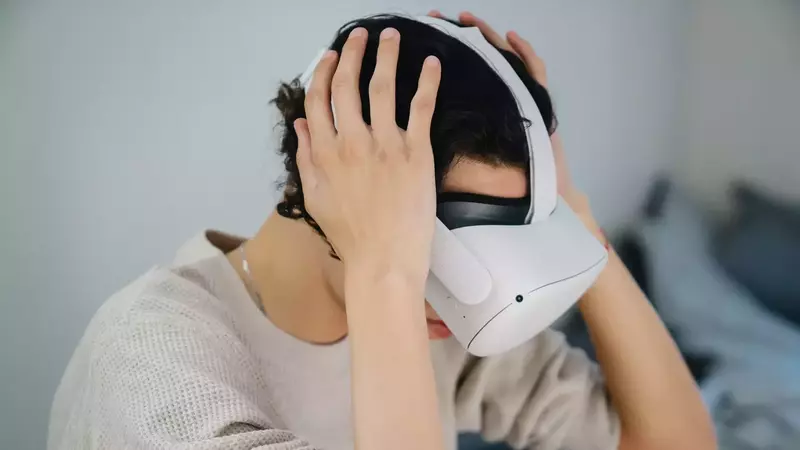
Before you can start playing Minecraft in virtual reality, it’s essential to set up your VR headset correctly.
This section will provide instructions to assist in configuring various popular VR headsets for a full-fledged gaming experience.
Key Takeaway!
To play Minecraft in virtual reality, it’s important to set up your VR headset correctly. This section provides step-by-step instructions for setting up popular VR headsets such as Oculus Rift/Rift S and Quest/Quest 2, HTC Vive/Vive Pro and Valve Index, PlayStation VR (PSVR), and Windows Mixed Reality Headsets. It also emphasizes the need for a powerful computer that meets or exceeds Minecraft’s system requirements for optimal performance.
A. Oculus Rift/Rift S and Quest/Quest 2
If you own an Oculus Rift/Rift S or Quest/Quest 2, follow these steps:
- Install the Oculus app on your PC from the official website.
- Connect your headset to your computer using a compatible USB cable (for Quest series).
- Create or sign in to your Oculus account and complete the setup process as prompted by the app.
- Navigate to “Settings” > “General” and enable “Unknown Sources.”
B. HTC Vive/Vive Pro and Valve Index
If you have an HTC Vive/Vive Pro or a Valve Index headset, follow these instructions:
- Create a Steam account if you don’t already have one, then download and install the SteamVR software from their store page to connect your controllers via Bluetooth.
- Fully charge both controllers before connecting them via Bluetooth with SteamVR running on your PC.
C. PlayStation VR (PSVR)
For PlayStation VR users, follow these steps:
- Connect your PSVR headset to the PlayStation 4 or PlayStation 5 console using the provided cables.
- Turn on both the console and PSVR headset.
D. Windows Mixed Reality Headsets
If you own a Windows Mixed Reality (WMR) headset, such as Samsung Odyssey+, HP Reverb G2, or Acer AH101, follow these instructions:
- Navigate to “Settings” > “Mixed Reality” on your Windows PC and connect your WMR headset via USB and HDMI ports.
Note that Minecraft in VR requires a powerful computer for optimal performance. Check out this guide on Minecraft’s system requirements, ensuring that your PC meets or exceeds them before proceeding with setup.
Configuring your VR headset is a straightforward task that necessitates adhering to the guidelines provided by the producer.
Now, let’s move on to installing Minecraft for VR and explore how we can start playing this exciting game in virtual reality.
3. Installing Minecraft for VR
If you’re ready to dive into the world of Minecraft in virtual reality, follow these steps to download and install the game on your chosen platform.
Take note that there are various versions accessible contingent upon your VR headset.
Key Takeaway!
To play Minecraft in virtual reality, follow these steps to download and install the game on your VR headset. For Oculus Rift/Rift S and Quest/Quest 2, purchase “Minecraft: Gear VR Edition” from the Oculus Store; for HTC Vive/Vive Pro/Cosmos & Valve Index, download regular Minecraft from their official website and then add “Minecraft Java Edition” to your library at viveport.com before installing the Vivecraft mod. PlayStation VR users can simply purchase and download “Minecraft: PlayStation 4 Edition” from the PlayStation Store with built-in support for PSVR.
A. Oculus Rift/Rift S and Quest/Quest 2
- First, make sure you have installed the Oculus software on your PC or laptop.
- In the Oculus app, navigate to the Store tab and search for “Minecraft.”
- Select “Minecraft: Gear VR Edition” from the results (don’t worry – it works with all compatible Oculus devices).
- Purchase and download the game by following the prompts within the app.
- The installation will begin automatically once downloaded; wait until it’s complete before proceeding.
B. HTC Vive/Vive Pro/Cosmos & Valve Index
- You’ll need a copy of regular Minecraft installed on your computer first; if you don’t already own it, purchase and download it from their official website (minecraft.net).
- Create an account or log in at viveport.com.
- Navigate to the “My Library” section under “My Dashboard.”
- Add “Minecraft Java Edition” to your library by clicking on “Add Game.”
- Download and install the Vivecraft mod, which enables VR support for Minecraft Java Edition.
- Run the Vivecraft installer and select “Install Vivecraft with Forge” if you want additional mods (optional).
- The installer will automatically detect your Minecraft installation folder; click “Install.”
Once you’ve completed these steps, launch Minecraft through either the Oculus app or SteamVR/VIVEPORT. The game should now be ready to play in virtual reality.
C. PlayStation VR
If you’re using a PlayStation VR headset, simply purchase and download “Minecraft: PlayStation 4 Edition” from the PlayStation Store. This version includes built-in support for PSVR without any additional setup required.
Installing Minecraft for VR can be a relatively simple procedure, but ensuring that everything is set up accurately is critical. Once the installation of Minecraft in VR is complete, we can now explore its immersive gaming environment.
4. Playing Minecraft in VR
Once your VR headset and Minecraft are ready, you can start exploring the thrilling world of virtual reality gaming.
In this section, we will discuss tips and tricks for playing Minecraft in VR, such as using motion controllers and adjusting settings for optimal performance.
Key Takeaway!
Get ready to immerse yourself in the world of Minecraft with your VR headset. Use motion controllers for a more natural gaming experience, adjust settings like framerate and sensitivity, and explore unique features such as teleportation or smooth locomotion. With Vivecraft mod available for HTC Vive, you can enjoy even more VR-specific features like room-scale support and custom animations.
A. Motion Controllers
For VR headsets, Minecraft offers compatibility with a range of motion controllers to facilitate an intuitive gaming experience as opposed to standard keyboard or mouse control.
These controllers allow you to interact with the game world more naturally than traditional keyboard or mouse controls.
To get started, ensure your motion controllers are properly connected and configured according to your headset’s instructions.
- Oculus Rift users can take advantage of Oculus Touch controllers.
- HTC Vive owners should use their standard Vive wands.
- PlayStation VR players can utilize PlayStation Move Motion Controllers or a DualShock 4 controller with built-in motion tracking capabilities.
B. In-Game Settings Adjustments
To optimize your experience while playing Minecraft in virtual reality, consider tweaking some in-game settings:
- Framerate: A high framerate is crucial for smooth gameplay when using a VR headset. Aim for at least 90 frames per second (FPS) by lowering graphics settings if necessary.
- Sensitivity: Adjusting sensitivity levels can help make movement feel more natural within the game environment.
- Vignette Strength: This setting reduces peripheral vision during movement to minimize nausea caused by rapid movements; experiment with different strengths until you find one that suits your comfort level.
- Hud Distance & Scale: Adjust the distance and size of in-game menus for easier readability while wearing your VR headset.
C. Exploring Minecraft’s Virtual Reality Features
Minecraft offers a variety of unique features specifically designed for virtual reality gameplay. For example, you can choose between two different movement options: teleportation or smooth locomotion.
Teleportation allows you to instantly move from one location to another by pointing at a spot on the ground with your motion controller, while smooth locomotion provides more traditional joystick-based movement.
In addition, Vivecraft, a popular mod available for HTC Vive and other SteamVR-compatible headsets, adds even more VR-specific features such as room-scale support and custom animations.
By following these tips and tricks, you’ll be well-equipped to enjoy an immersive Minecraft experience like never before.
Playing Minecraft in VR can be an incredibly immersive and rewarding experience. Therefore, it is wise to familiarize oneself with the potential problems that may arise during playtime in order to ensure a hassle-free experience.
5. Troubleshooting Common Issues
Experiencing problems while playing Minecraft in virtual reality can be common, but we’ll provide solutions to help you overcome them.
In this section, we’ll discuss common problems you may face and provide solutions to help you overcome them.
Key Takeaway!
Playing Minecraft in virtual reality can be an immersive experience, but it’s not uncommon to encounter issues such as lag or motion sickness. To improve performance, adjust graphics settings and close background applications, while taking breaks and experimenting with different movement options can help alleviate motion sickness. Troubleshooting controller issues involves checking battery levels and sensor placement.
A. Lag or Low Frame Rate
If you’re experiencing lag or a low frame rate while playing Minecraft in VR, there are several steps you can take to improve performance:
- Adjust graphics settings: Lowering your game’s graphics settings, such as render distance and particle effects, can significantly reduce lag. To do this, navigate to the “Video Settings” menu within Minecraft.
- Close background applications: Running other programs on your computer while playing Minecraft in VR may cause performance issues. Close any unnecessary applications before launching the game.
- Update drivers: Ensure that your graphics card drivers are up-to-date by visiting the manufacturer’s website and downloading the latest version for your specific model.
- Increase allocated RAM: Allocating more RAM to Minecraft can also help with performance issues. Follow these instructions from Mojang on how to allocate more memory: Allocating More Memory.
B. Motion Sickness
Motion sickness is a common issue when using virtual reality headsets due to differences between what our eyes see and what our body feels. If you’re prone to motion sickness while playing Minecraft in VR, consider trying these tips:
- Take breaks: Limit your play sessions to shorter periods and take regular breaks to help reduce the risk of motion sickness.
- Adjust movement settings: Experiment with different in-game movement options, such as teleportation or smooth locomotion, to find a setting that feels most comfortable for you.
- Familiarize yourself with VR: Gradually increasing your exposure to virtual reality can help your body adjust and become more accustomed to the experience. Start by playing less intense games before moving on to Minecraft in VR.
C. Controller Issues
If you’re having trouble with your motion controllers while playing Minecraft in VR, try these troubleshooting steps:
- Battery check: Ensure that your controllers have fresh batteries installed. Low battery levels may cause erratic behavior or disconnections.
- Sensor placement: Make sure that the sensors for your VR headset are properly placed and not obstructed by any objects. Refer to the setup guide provided by the manufacturer for optimal sensor positioning.
- Pairing issues: If you’re experiencing connection problems between your controller and headset, refer back to step two of this guide: Setting Up Your VR Headset.
6. How to Play Minecraft in VR
If you’re a fan of Minecraft and virtual reality, you might be wondering how to combine the two.
Playing Minecraft in VR can be an incredibly immersive experience that adds a new level of excitement to the game. Here’s how to get started.
A. What You’ll Need
Before you can start playing Minecraft in VR, you’ll need a few things:
- A compatible VR headset, such as the Oculus Rift or PlayStation VR
- The Minecraft for VR version from the respective store (Oculus Store or PlayStation Store)
- A computer or gaming console that meets the minimum system requirements for the VR headset and Minecraft
B. How to Play Minecraft VR
Once you have everything you need, follow these steps to start playing Minecraft in VR:
- Set up your VR headset and ensure it’s working correctly.
- Install the Minecraft for VR version from the respective store (Oculus Store or PlayStation Store).
- Launch the game and follow in-game instructions to start playing.
C. Playing Minecraft VR on Oculus Quest 2
If you have an Oculus Quest 2, you can still play Minecraft in VR. However, there is no official support yet from Mojang Studios for native Quest gameplay. Here are two ways to play Minecraft VR on Oculus Quest 2:
- Sideload Vivecraft (Java Edition)
- Use Xbox Game Pass with PC streaming via Virtual Desktop app
D. Is Minecraft Worth Playing in VR?
Minecraft is definitely worth trying out in virtual reality. The sense of scale provided by a VR headset and intuitive controls make it enjoyable for new players and veterans alike. Playing Minecraft in VR can add depth and realism to building structures and exploring worlds, making it an immersive experience that you won’t forget.
Final Thoughts!
In conclusion, playing Minecraft in VR can be a truly immersive experience that takes your gameplay to the next level. By understanding the basics of virtual reality and setting up your headset properly, you can install Minecraft for VR and start exploring new worlds like never before.
Whether you prefer the Java or Bedrock edition, there are different methods available to launch Minecraft in VR depending on your hardware setup.
If you’re looking to enhance your gaming experience with virtual reality beyond just playing Minecraft, check out PursuitMETA. Our team specializes in creating custom-built PCs optimized for VR performance so that you can enjoy seamless gameplay without any lag or stuttering. Take advantage of this unique opportunity to become an elite gamer!

Espen
Espen is the Director of PursuitMeta and has written extensively about Virtual Reality and VR Headsets for years. He is a consumer product expert and has personally tested VR Headsets for the last decade.

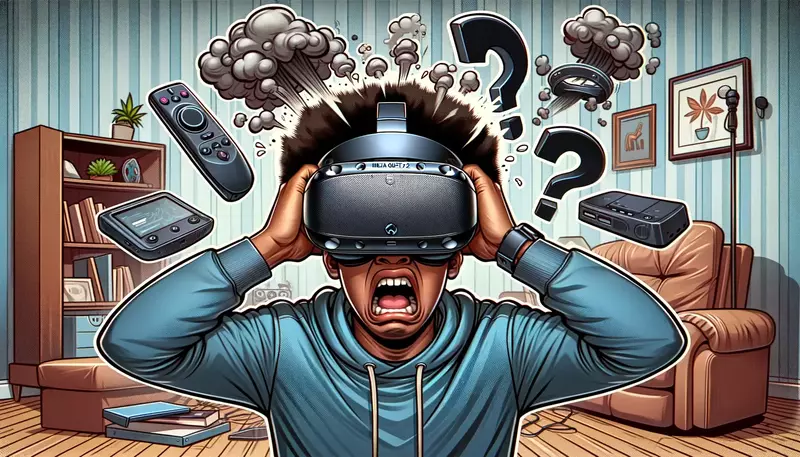
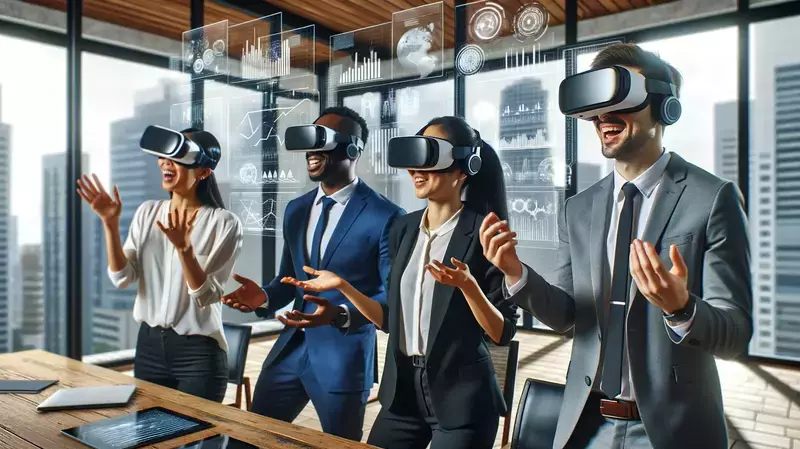
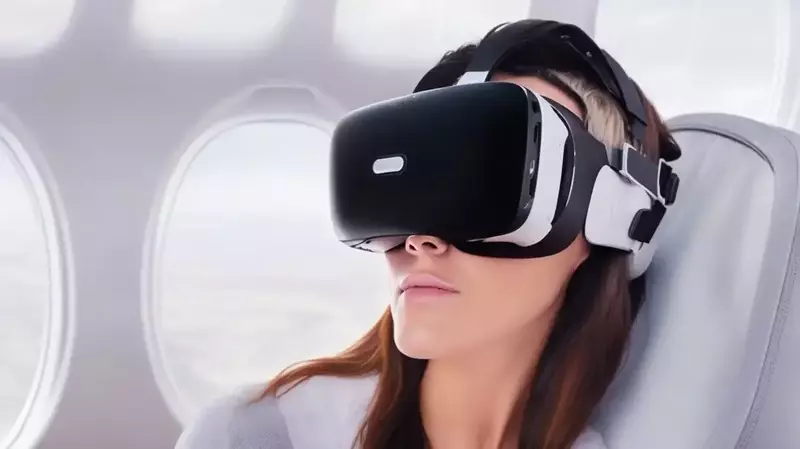
Leave a Reply